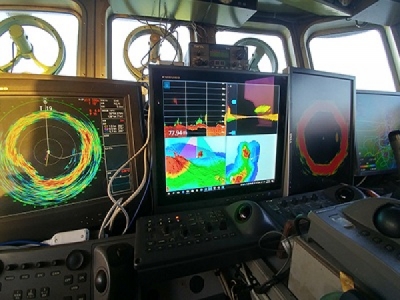
Posted on April 5, 2018
WASSP, the professional multibeam sounder that delivers water column and seabed profiling with 224 beams offering significant improvements in speed and accuracy over conventional single-beam echo-sounders, is delighted to announce the launch of its innovative new Key Pulse and patent pending Interference Management System including automated frequency and bandwidth algorithm.
One major problem faced by manufacturers of sonar systems is that underwater environments are often noisy due to other acoustic devices operating in the same local body of water. Noise levels or interference caused by interoperating acoustic equipment vary widely depending on the operating parameters of the equipment and the water column. This noise interferes with accurate underwater detection and makes it difficult, both for the sonar device and for the user, to interpret an underwater environment.
When multiple sonars and sounders are transmitting in close proximity, there is competition for a clear reception and with no authority like the International Telecommunication Union (ITU) to control the frequencies used, the result can be significant acoustic interference between systems. Rather than the common solution of simply increasing the power output, which exacerbates the problem overall, WASSP has taken an innovative approach. By changing the frequency and bandwidth to a location in the frequency domain that is not in use by any other system at that moment in time. This does not only prevent acoustic interference in the WASSP equipment but also in the other acoustic equipment on board.
It is an object of at least some embodiments of the invention to provide a sonar system with an improved interference management system that allows for the automatic and dynamic adjustment of the operating settings of a sonar system to optimally avoid interference from interoperating acoustic equipment.
By taking the standard KP and adding to it, WASSP’s new software enables all sounder and sonar systems, regardless of manufacturer, to operate significantly more efficiently.
WASSP systems are used extensively for fishing, surveying and mapping, and a range of other activities, its multibeam sounder technology highlights individual and schools of fish in the water columns and reefs, wrecks, foreign objects and seafloor hardness changes on the seafloor. This development allows these multibeam sounders considered by mathematicians as fulfilling the perfect sounder equation to work on vessels with an array of other sounders and sonar.
Source: WASSP





